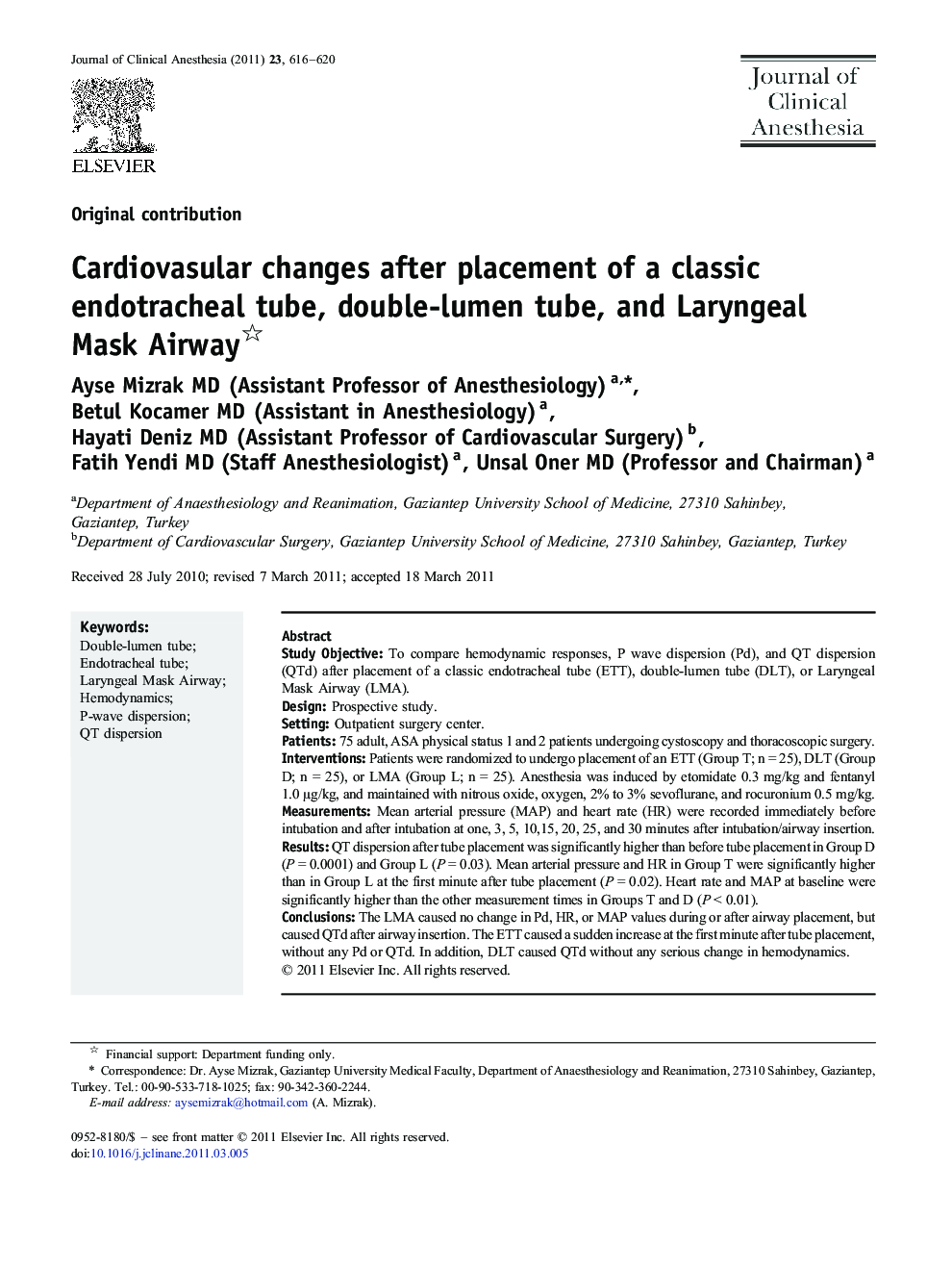| Article ID | Journal | Published Year | Pages | File Type |
|---|---|---|---|---|
| 2763314 | Journal of Clinical Anesthesia | 2011 | 5 Pages |
Study ObjectiveTo compare hemodynamic responses, P wave dispersion (Pd), and QT dispersion (QTd) after placement of a classic endotracheal tube (ETT), double-lumen tube (DLT), or Laryngeal Mask Airway (LMA).DesignProspective study.SettingOutpatient surgery center.Patients75 adult, ASA physical status 1 and 2 patients undergoing cystoscopy and thoracoscopic surgery.InterventionsPatients were randomized to undergo placement of an ETT (Group T; n = 25), DLT (Group D; n = 25), or LMA (Group L; n = 25). Anesthesia was induced by etomidate 0.3 mg/kg and fentanyl 1.0 μg/kg, and maintained with nitrous oxide, oxygen, 2% to 3% sevoflurane, and rocuronium 0.5 mg/kg.MeasurementsMean arterial pressure (MAP) and heart rate (HR) were recorded immediately before intubation and after intubation at one, 3, 5, 10,15, 20, 25, and 30 minutes after intubation/airway insertion.ResultsQT dispersion after tube placement was significantly higher than before tube placement in Group D (P = 0.0001) and Group L (P = 0.03). Mean arterial pressure and HR in Group T were significantly higher than in Group L at the first minute after tube placement (P = 0.02). Heart rate and MAP at baseline were significantly higher than the other measurement times in Groups T and D (P < 0.01).ConclusionsThe LMA caused no change in Pd, HR, or MAP values during or after airway placement, but caused QTd after airway insertion. The ETT caused a sudden increase at the first minute after tube placement, without any Pd or QTd. In addition, DLT caused QTd without any serious change in hemodynamics.
